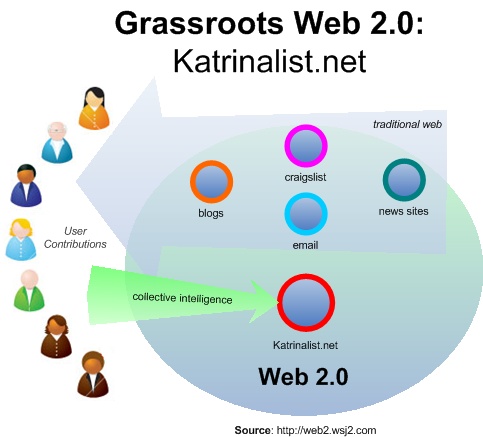As I prepare to give a keynote address about Web 2.0 to a DC area technology industry day, I have been looking hard for classic examples of Web 2.0 phenomenon happening at a grassroots level. It’s one thing for Web 2.0 applications to be hyperscrutinized and lauded by the technorati, but it’s quite another for every day Web users to be actually doing this stuff of their own accord. For example, I look at Tech.Memeorandum’s coverage of Amazon’s new Web 2.0 friendly tags, and I’m not so sure it’s setting the world on fire yet.
I get more encouraged when I see simple, straightforward Web 2.0 solutions like SuprGlu, which allows anyone to dynamically integrate Web services that matter to them from all over the Web in just a few minutes. I use this example to show how anyone can do meaningful and actually useful Web 2.0 style service remixing and syndication with a few points and clicks and get something out of it that can in turn be reused. And it shows that Web 2.0 as the Global SOA is real and here today as well.
But the success and popularity of SuprGlu isn’t evident either. I want examples that show us that harnessing collective intelligence is a normal and common event, that network effects and large scale Web-enabled customer self service really are changing the world bottom up. I don’t find top down efforts with Web 2.0 startups or widespread blogging about Web 2.0 to be compelling evidence yet, as interesting as those things are to me personally.

Enter an absolutely fascinating article in the December, 2005 issue of Discover magazine. In another piece of written virtuosity, technology writer Steven Johnson finds that Web 2.0 is happening right in front of us. If you recall, Steven Johnson did a bang up job on one of the first mainstream Web 2.0 articles in print in Discover magazine earlier this year. In this new piece, which is not available online right now, so I’ll do fair-use quotes here, Johnson explores how people used Web 2.0 techniques, entirely unconsciously, to effectively deal with the aftermath of the Katrina hurricane disaster on a large scale.
It’s a fascinating read and Johnson’s premise is this: “Ordinary citizens can’t do much about a 150-mph wind or a 30-foot wave, other than get out of the way. But the Internet revolution teaches us that ordinary citizens can play a crucial role in creating nimble new channels of information that are more resilient than official channels.” The article chronicles the search for survivors in the chaos after the disaster and how people attempted to find each other using the Web.
At first, once the hurricane passed, there were a few isolated Web posts announcing a person’s safety or location that were spread across blogs and a few national sites like craigslist. What’s interesting is how the initially sporadic, individual efforts quickly coalesced into a self-organized effort of thousands of individuals that unconsciously leveraged the Web 2.0 memes of radical decentralization and harnessing collective intelligence.
Says Johnson, “on Saturday, September 3, as the catastrophe worsened, a handful of tech-savvy volunteers led by David Geilhufe started gathering data from these [isolated survivor posts] by ‘screenscraping’ the information for each person and depositing it in a single database.” Geilhufe even concocted a standardized information structure called PeopleFinder Interchange Format to encode the information. There were thousands of missing people notices online the next day that weren’t in this format because they were free form and not machine readable. So well known online figures Jon Lebkowsky and Ethan Zuckerman recruited volunteeers and in a self-organizing effort assembled thousands of people in a single day to create over 50,000 entries.
The result was katrinalist.net, which allows anyone to search for friends or relatives despite the fact that the information was originally deposited in free form text on some other site. Katrinalist’s data source was a kind of emergent, self-organizing Mechanical Turk effort that harnessed the collective input of thousands of people to form a new high-value data source that was of enormous benefit to the world at large, all in a handful of days. Johnson says, “PeopleFinder was the kind of data management effort that could have taken a year to execute at great expense if a corporation or a government agency had been in charge of it.“
Katrinalist.net is exactly the sort of thing I would expect to see happening if Web 2.0 principles not only work, but are the inevitable effect of hundreds of millions of well-connected users with two way access to the Web. Imagine what they can do for your organization or your personal dreams, if leveraged properly.
Update: The Discover article about Katrinalist.net is now available online.
